|
You are reading the older HTML site
Positive Feedback
ISSUE
21
An interview with Craig Goff of Kryophysics -
Hey, it's not just a bunch of dry ice! This is the first in a series of interviews with various people in the cryo-industry as to the what's and why's of cryoing - more to come!
So what's the story behind Kryophysics? Kryophysics (http://kryophysics.com) is a commercial cryogenic treatment facility featuring computer-controlled large capacity dry-process heating and cooling chambers, located in Camarillo, California. I started the business two years ago to address market needs in performance motorsports, precision industrial machinery and cutting blade enhancements for metal, wood and food processing. I didn't pursue cryogenic treatment for audio components immediately, but waited until I was sure that it worked well for those kinds of applications. How did you get into this? In 1979, I had my first exposure to thermal processing of metals when I worked as a CNC programmer for an aerospace machine shop. It was necessary to treat many of the parts prior to machining, using a process that would cycle three times between -100 degree F and +300 F over a period of about 24 hours. This "cold stabilization" technique would help stress relieve the metals and toughen them so that they would warp less during machining and last longer in their intended final uses. I left machining in 1983, working as the Production Manager and later as the Engineering Manager for a company that produced custom metrology equipment for high tech manufacturing. We designed and made machines used for non-contact inspection of critical dimensions on manufactured parts, often measuring objects that required accuracy certainties in millionths of an inch, or fractions of a micron. A typical machine would use high power microscope optics coupled to computer controlled XYZ axis motion platforms, so that the part to be inspected could be moved with precision beneath the optics, allowing a high resolution camera and image grabber PC board looking thru the microscope to make quality judgments about what they saw. As you can imagine, our customer list included a number of finicky high tech names, including: IBM, RCA, Panasonic, General Dynamics, Ford, Grumman Aerospace, Xerox, etc. It was absolutely essential to make these machines as mechanically stable as possible, so that the measurements made on the machines would have a high repeatability and reliability factor. Vibration, humidity, temperature and atmospheric pressure all played a part in affecting these measurements. Treating the critical metal machine parts using the "cold stabilization" technique previously described significantly helped in this endeavor, as did careful application of a variety of anti-vibration technologies. Leaving that world in 1998, I became involved with a small industrial company that produced custom anti-vibration isolators for high tech manufacturing industries. Ultimately, they too adopted heat treating and cryogenic techniques to further perfect the performance of their devices. Though their technology was viable, their finances were not, leading to the unfortunate dissolution and sale of their business units in 2002. Bereft of employment, I spent a year of soul-searching and market research before deciding to open Kryophysics in 2003. I realized that cryogenic treatment was a universal force in many of the businesses I had dealt with, and that it provided a number of affiliations for other business opportunities. Fortunately, my many prior years of dealing with local high tech manufacturing industries afforded quick entry into the marketplace. What is your background/history in audio? Like many, I was afflicted with the "audio bug" in my teens, when listening to music began to play an ever-more-important role in my life. Tinkering with the equipment was always a favorite hobby. As a college freshman in 1970, I took the Sony cassette player out of my car, hooked it up to a large flashlight battery and piggybacked a dual outlet headphone control box onto the output of the player. In that way, two people could listen via headphones, each with their own volume control. Once all of this was safely tucked away in my daypack, I had what was probably one of the first "Walkman" players in existence, though Sony's offering didn't appear until 1979. Looks like I might have missed an opportunity there….. Once I graduated from college, I worked as the assistant manager for two high end audio salons and transitioned into audio manufacturing in 1977, working as the world-wide Service/Customer Service Manager for Infinity Systems (Chatsworth, CA) until 1979. In 1994, I replaced the conventional supply in my 25W/channel Class A power amp with SLA batteries and later got involved with the amp's manufacturer, helping them to produce a series of battery powered solid state amps and a battery powered vacuum tube line stage. These units had some commercial success in the marketplace, though the manufacturer ultimately made some poor business decisions, leading to the demise of his company. In 2000, while working for the industrial vibration isolator company, I visited the Las Vegas CES to see what was happening in the realm of amplifier chassis esthetics, as I was interested in producing a battery powered digital amp for an audio distributor friend in the Midwest. During the first day at the show, I couldn't help but notice the mind-boggling array of resonances dampers, cone feet, special racks and isolation shelving used to treat vibration and resonance issues.
Since then, Kryophysics has provided a new avenue for involvement with the audio community. I currently provide cryogenic processing for roughly one dozen manufacturers in the consumer and pro audio market. Additionally, my services are also available from selected dealers in the Southern California area. Can you take us on a step-by-step process on how you cryo something? First, audio components are inspected for shipping or cosmetic damage, (making note of any), then parts are selectively removed from the component that could possibly be hurt by cryogenic temperatures. Because audio components require great care when handling (how do you like someone to treat your $5K preamp?) they are wrapped in thin plastic so that cosmetic damage can be avoided. The components are then weighed and placed within the cryo chamber. Once the cryo processor's computer is programmed for the load weight and intended cycle duration, the process is begun.
Under computer control, the temperature within our
sealed chamber is slowly lowered using cold nitrogen vapor at a rate averaging
no faster than one degree F per minute until it reaches the target temperature
of -300 degrees F. Depending on the process requested by the customer, the
components will dwell at -300F for 24 to 48 hours. When the cooling cycle is
completed, the chamber interior temperature is brought back to room temperature
at the same slow rate used during the original descent. Once out of the
processor, the components are unwrapped and, if necessary, have the parts
reattached that were originally removed for safeguarding. Are there different ways or methods of cryoing? Most cryogenic processes are defined as wet or dry, depending on whether the object to be processed is immersed in the cryogen (typically liquid nitrogen) or exposed to cryogenic (nitrogen) vapor. For audio applications, both processes are used commercially, though the vast majority used the vapor-based technique. Varying the length of the "dwelling cycle" (the time during which the cryo processor steadily maintains its lowest temperature) also provides an additional processing (and pricing) variable. How do they differ with respect to what is happening to the object at hand? That is, is one method better than another with respect to the item being cryoed or the result you are after? Ultimately, this is a question of economics for the audio marketplace. Using the wet process will bring the component closer to the native temperature of liquid nitrogen (-322F to -345F) than will the vapor technique which can get to about -310F to -320F. Although it isn't really a question of "colder is better", the liquid process will bring an object down to a cold temperature faster, and maintain that temperature uniformly more easily than vapor can. It is definitely more expensive to cryogenically treat items via liquid immersion as compared to vapor and, because of the thermal shock that can be experienced when an object is immersed in cryogenic liquid, there are a greater number of materials that will not tolerate wet immersion well. (I'm not sure that an entire CD/DVD player can withstand wet immersion, whereas I have successfully treated many players using the vapor method.) At these low temperatures, the wet and dry processes can be considered essentially equivalent, assuming that the dry process will require a longer time to bring a given component down to the desired core temperature. It has been found that extending the length of time of the "dwell cycle" at the lowest controlled temperature will beneficially affect all audio components, although the law of diminishing returns also applies here! What actually happens to the item when it is cryoed in terms of the material itself? A little background here can go a long way to clarifying the answer to this question!
The technical term for this is stress, either residual or thermal, depending upon the genesis of the stressing force. These stresses usually result in atoms being displaced unevenly from each other and further away than ideal. Obviously, atoms that are further apart are not going to be bonded to each other as strongly, resulting in structural weakness. Magnifying this problem, is the fact that materials must usually undergo further processing to be useful; plastic and glass are often molded, whereas metals are often stamped, milled, ground, extruded, sawn, bent, sanded, etc. to achieve the desired final form. These secondary formative processes add stresses to the material through the effects of localized, uneven heating and cooling during the reshaping of the material. In a perfect world, all atoms of a homogeneous material would be equidistant from their neighbors and bonded with the same level of energy. Such a material would have no residual or thermal stress. In an attempt to achieve this ideal, material manufacturers use a variety of stress-relieving techniques to reduce the overall level of material stress. By far, the most common is the use of heat treating; which raises the level of energy within the material until the atoms are able to move more freely and then settle back into place as they cool. Although practice has shown that this is a viable procedure, we still have the issue of overly rapid cooling which will again trap atoms in places where they are not ideally bonded. Furthermore, the heat treating procedure may not go high enough in temperature to release all the stressed atomic bonds, since the higher temperature could adversely affect the material's properties or melt it! By the way, the term we call temperature is really just the measure of atomic activity: high temperature=high atomic activity, low temperature=low atomic activity, absolute zero=no atomic activity. Cryogenic processing stress relieves materials more thoroughly, through compaction produced by the removal of energy. As an object is cooled, energy is driven off, and the atoms of the material are drawn closer together, creating the opportunity for bonding. This closes microscopic voids and discontinuities, allowing the material to have greater structural order and coherence. Keep in mind that this is happening very slowly so that the atomic migration produced by cooling does not induce stress. When the cryogenic cooling process is complete and the object returns (slowly!!) to ambient conditions, many of the bonds formed at cryogenic temperatures are retained, improving the order and homogeneity of the material, relieving it of stress. Once the material has been permanently and beneficially altered through cryogenic treatment, it will respond in a different manner to energies (such as vibrational, thermal and electrical) that attempt to traverse it.
"For a local company that produces expensive (and strikingly handsome) custom drum sets for musicians all over the world, I deep cryo treated a number of drum "shells" (the open cylinder shaped part of a drum) made from a variety of materials. The drum company and I were interested in finding out whether cryo treating the shells would cause them to produce different sounds, sounds that could be marketed as a new sonic "flavoring" for their discerning and highly varied clientele. First, a small group of metal shells was selected, all having the same geometry, thickness, and pitch when struck. There were shells comprised of titanium, aluminum, brass and bronze, as well as wooden shells made of thin plys of birch and oak. From this group, shells in each of these materials were selected as controls in the experiment, and were not cryogenically treated. All of the drum shells responded similarly to the cryo processing. The sound had changed, in some cases more so than others. When struck, the cryoed shell produced a slightly lower pitched, less resonant tone, devoid of much of the overtone structure of the standard shell, and more quickly decayed to silence than its untreated counterpart. Clearly, the cryoed drum shells exhibited a much more highly damped sonic signature, regardless of composition. Though, ultimately, the drum company did not find the sound change appealing, all involved in the experiment were amazed at the scope of the sonic change cryo treatment produced." Similarly, thermal energy will dissipate more rapidly in a cryo-treated material, as seen in the lower operating temperatures experienced by local racing enthusiasts who have treated engine and braking parts. Finally, I have observed that electrical energies will pass more effectively, as reported by an audio amplifier manufacturer whose 100W/channel units I have cryoed, finding a consistent 2.5% - 3% increase in output power after treatment. How does this translate to what we hear? Though my thoughts about this answer may be considered somewhat heretical by others who are in the cryogenic processing business, I believe that the sonic changes are the component's reaction to what cryogenic treatment accomplishes in the vibrational, thermal, and electrical realms. How are these changes are commonly characterized and described in the audio community? It is now possible to find a fair amount of information on the internet concerning cryogenic processing of audio componentry and its attendant results. A recent Google search of the combined words cryogenic and audio yielded sixty bull's-eyes out of the first sixty-four hits; a far cry from the handful that were extant just three years ago. Nearly all of these make reference to the following terms or concepts:
These descriptors are frequently seen in the audio world, particularly as they apply to vibration isolation/resonance damping products and power conditioning devices. Currently, there are more than one hundred anti-vibration solutions available to the audiophile marketplace; highly varied in material composition, shape, size and operating principle. Most of these solutions are relatively inexpensive, providing an easy way to make (often considerable) changes in the way a system sounds. The fact that most of these devices are deployed underneath the chassis of the component involved begs an obvious question/commentary ...you mean to tell me that mechanical resonant energies can affect electrical circuits and change the way they sound? The simple and unequivocal answer is yes, as anyone who has played with squishy rubber component feet vs. metal spikes and cones can tell you. Though effective at changing the sound, one of the problems with these solutions is the fact that they are external; outside the chassis, outside the PCBs, outside the power supply, outside the capacitors, resistors, vacuum tubes, etc. Cryogenic treatment offers an internal resonance damping capability that literally affects every atom of the component to the core. Furthermore, the external isolator/damper by its nature has a restricted audio bandwidth within which it is useful; the even-handed results from cryogenics have no such limit. The fact that the same or very similar kinds of sonic perceptions are gathered from the use of external isolators or cryogenics might imply a commonality in the way they operate. However, the kind of resonant damping introduced by cryogenics cannot be replicated by any other technologies, because they are all external and/or bandwidth restricted. As the structure of the parts of a component are made more coherent by stress relieving, the parts react more uniformly to vibrational forces and quiet down more quickly. Imagine, if changing the external feet under a CD player brings positive results, what would happen if you were to apply resonant damping to every bit of circuitry, wiring and chassis within the player? Like the vibrational energy changes, both thermal and electrical effects from cryogenic treatment have their share in contributing to the sonic enhancements listed above, though in my opinion these contributions are smaller than those accomplished by the resonant damping characteristic of cryogenic processing. The enhanced coherence of the components materials simply allow those energies to pass through more easily and with less restriction. Can any of this be measured? Ah, herein resides a problem! Thus far, it is obvious to the audio community that cryogenics does change the sound of a treated component, but how? And why? The effects can be quantified, but who is measuring them? Some of those who use cryogenic processing as an indigenous part of their manufacturing process have undertaken the task of attempting to quantify the effects. The manufacturer of a high-end cryogenically treated DAC states unequivocally that he can measure the differences between treated and untreated DAC units. Is he sharing the nature of these tests with the audio community? It's not a surprise that he is not; since those are proprietary findings and part of his intellectual property. Furthermore, there are some who are using cryogenics in their production without announcing its presence. For them it is a "secret weapon", since there are no readily discernable visible changes to an object that has been cryo treated. How then will objective measurement and evaluation of cryogenic processing take place? I doubt that the audio community will be the open source for this information. It is more likely that industrial research will reveal these secrets in time, assuming that there is an interest in pursuing knowledge in this particular vein of audio physics.
On the one hand, those who have the opportunity to compare identical cryo treated and non-cryo treated components will hear a difference, assuming that the playback system has sufficient resolution to reveal them. The fact that the reasoning for that difference is not yet found in abundant scientific or analytical discussion, relegates (for some) cryogenic processing to the place reserved for debate about tubes vs. transistors, cone vs. rollerball isolation, etc. However, if an effect in nature can be reliably perceived and reproduced by and for a large enough audience, then it exists. The lack of a scientific description does nothing to denigrate the effect's existence. It simply means that our scientific capacity to describe the effect has not yet been sufficiently developed. Where do you see the greatest benefit with respect to what is cryoed? Cables, electronics, etc.? The largest ingress of cryogenic treatment in audio is found in the cable market, mostly due to the fact that cables are relatively inexpensive, not very bulky or delicate and usually do not require any special attention or handling when cryogenically treated. For that reason, most people assume that cryo is really best for cables, unaware of the physics involved and the potential benefit to other devices. There is no question that cryo treatment benefits cables of all sorts, but those results pale in comparison to the effect of treatment on active devices such as preamps, amps, processors, DACs and disc players. The highly complex nature and mixture of materials within those units provide a broad canvas upon which to portray the sonic improvements induced by treatment. A wide variety of highly stressed items reside within these units: the solder joints, the plastic that encapsulates the silicon and lead frames of op-amps, voltage regulators, transistors, and the extruded insulation material that coats extruded metal conductors, the stamped and bent chassis and header metals, filter capacitors and transformers, etc. Cryogenically treating entire components is not for the faint of heart though, since there is a very real risk of damaging some constituent parts at cryogenic temperatures. Is there a limit to what can be cryoed? What I mean is, are there things that will not survive a freeze or perhaps have little if any benefit if treated? There is a list of materials and items that do not fare well at -300F, among them rubber and certain elastomers, some plastics, glues and display elements. If these are to survive, they must be removed from the component prior to treatment. Elements that do not exhibit improvement are those with more randomly ordered makeup, such as carbon fiber, cloth and wood. One might think that fiberglass and MDF would also be a part of this group, but the fact that they contain large amounts of glue (which cures differentially) means that they will benefit from the stress relief that cryogenic processing affords. Are there any potential drawbacks to cryoing? Apart from the physical perils mentioned in the last section, there are some possible downsides. One is the fact that a newly cryoed component will need another period of break-in before it settles down sonically. Remember that we have been shifting things at the atomic level and, to some extent; new pathways are being blazed in the conducting elements of the unit. The break-in period is highly variable, dependent upon the nature of the materials that were treated. Additionally, there is the possibility that the resonant damping capability of cryo treatment can be too much of a good thing for some. Material resonances within a component can be found almost anywhere within the audio band, though the most audible ones seem to reside in the bass range. When the Q of those resonances is damped there will be less energy to modulate the electronic signal passing through the component, with a corresponding diminishing of the perceived frequency response in that range. I have had very few complaints about this issue though. Is this long term or does something require a visit to the chamber after some time? The effects of cryogenic processing are permanent and irreversible, unless the treated material is heated up close to its critical temperature, at which point the atoms will have sufficient energy to begin randomly moving from their formerly ordered positions. The only audio component that I know of that approximates this condition is the vacuum tube which, depending upon the current involved, can run some of its metallic elements at substantially elevated temperatures. Ironically, vacuum tubes, which benefit greatly from a reduction of resonant microphonics, are one of the most frequently cryo-treated audio devices. Though in theory this might be an issue, I have not yet had an experience with retreating tubes. Where do you see the future of cryoing? The future of cryogenic processing as a whole is very bright, since new industrial applications are constantly being discovered. Within audio, cryogenics will continue to play an advancing role, with the likelihood of it moving into the mainstream once suitable data is available to support those who doubt its premise. Until then, I am concerned that it will be viewed as "one more of those things that we can hear and like, but don't yet know how to quantify". I am also hoping that further research into its workings may help reduce the time (usually three days) and cost (usually about $10/lb) associated with the procedure. In the meanwhile, it continues to gain traction within the marketplace, as manufacturers and audiophiles alike discover the really cool sound produced by cryogenics.
Kryophysics
|

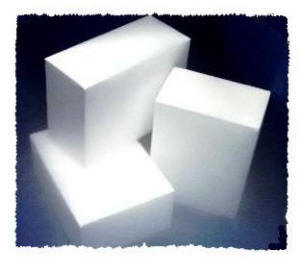
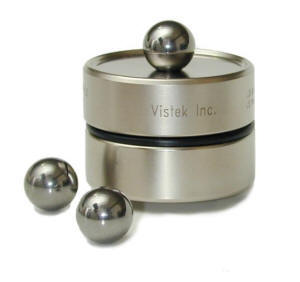 Back in the hotel late that night with the audio
distributor, I took apart one of my factory's isolators to show its innards to
him and explain its operating principles. At that moment, I had a flash of
inspiration. Reconfiguring the isolator before us, and redesigning some of its
parts might produce a viable solution for audioband resonance and vibration! By
June of 2000, full production of the newly minted Aurios Media Isolation Bearing
was underway. My distributor friend, Paul Wakeen, (now of Stillpoints/ERS fame)
took on domestic and international distribution duties while I continued with
product development. Over 10,000 units of the MIB in its various iterations
were sold before Paul and I left the company in 2002.
Back in the hotel late that night with the audio
distributor, I took apart one of my factory's isolators to show its innards to
him and explain its operating principles. At that moment, I had a flash of
inspiration. Reconfiguring the isolator before us, and redesigning some of its
parts might produce a viable solution for audioband resonance and vibration! By
June of 2000, full production of the newly minted Aurios Media Isolation Bearing
was underway. My distributor friend, Paul Wakeen, (now of Stillpoints/ERS fame)
took on domestic and international distribution duties while I continued with
product development. Over 10,000 units of the MIB in its various iterations
were sold before Paul and I left the company in 2002.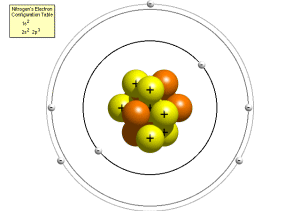
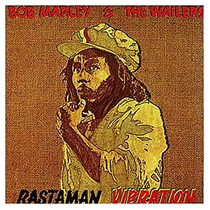 Most of the materials (glass, various metals and
plastics) that constitute audio componentry begin in a molten state. For the
sake of expediency, they are quickly cooled and shaped for their intended
purpose. The speed of the formative cooling process does not allow the
materials' atomic structure to remain homogeneous and evenly patterned
throughout, leaving subtle discontinuities that define areas of weakness within
the material.
Most of the materials (glass, various metals and
plastics) that constitute audio componentry begin in a molten state. For the
sake of expediency, they are quickly cooled and shaped for their intended
purpose. The speed of the formative cooling process does not allow the
materials' atomic structure to remain homogeneous and evenly patterned
throughout, leaving subtle discontinuities that define areas of weakness within
the material. 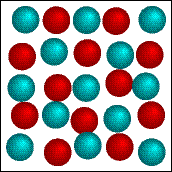 Because the number of gaps in the material has been
reduced, there are more (and shorter) paths for energy to pass through. This
means that vibrational energy will more quickly dissipate once introduced into
the material, as will thermal energy and electrical energy. From a technical
perspective, we would say that the material's reaction to vibrational energy is
more highly damped, less resonant; or that its "Q" has been lowered. Please
allow me to illustrate using an example from my own experience two years ago,
excerpted from an online posting:
Because the number of gaps in the material has been
reduced, there are more (and shorter) paths for energy to pass through. This
means that vibrational energy will more quickly dissipate once introduced into
the material, as will thermal energy and electrical energy. From a technical
perspective, we would say that the material's reaction to vibrational energy is
more highly damped, less resonant; or that its "Q" has been lowered. Please
allow me to illustrate using an example from my own experience two years ago,
excerpted from an online posting: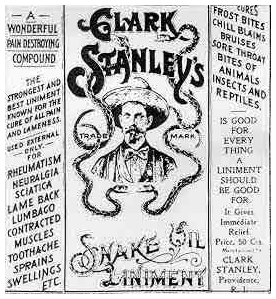 So
then people may say it is all a bunch of snake-oil!
So
then people may say it is all a bunch of snake-oil!